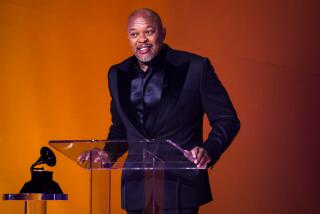<b>A Picture of Health</b>: A Stroke in Prime Time
It started that morning with a headache-an agonizing sensation of crushing pressure, just short of bone shattering-along one entire side of my skull. My husband, Larry, suggested calling the doctor; I opted for two aspirin.
My logic was perfect in its circularity: If the headache were a dangerous symptom, I would have to go see the doctor. Unscheduled time was an absent luxury from our upper-middle-class L.A. existence. Juggling two screenwriting careers with two children, a perpetual low-grade frenzy was the hallmark of our life. That week was typical: deadlines, a shopping trip with my 16-year-old daughter, Jenni; an oft-postponed trip to Magic Mountain for my 7-year-old son, Jeremy; and my mothers 70th birthday. All of which I took as a likely explanation for the headache.
The next morning, my head felt better, but when asked why I was slurring my words, I hadnt a clue. Then Larry noticed one side of my face seemed to be drooping.
That afternoon, we sat before a neurologist who told us that, at 44, I was too young to be having a stroke. Bells palsy was mentioned, but a definitive diagnosis would have to await an MRI in two days. The doctors acceptance of the delay reassured me that whatever was going on, he had treated a whole lot worse. (I later learned the doctor had written probable MS. This never-mentioned hunch regarding an incurable disease may explain why he was in no hurry. I now know that no one is too young or too old to have a stroke.)
My husbands complacency in the face of such alarming symptoms-I now have come to understand-was the necessary handmaiden to his hopefulness. But what of my own supreme denial?
That night, I phoned friends and family and told of my amusing little neurological event, except no one was amused. They expressed alarm, especially at my own lack thereof. They thought I was cloaking my terror in the familiar garment of my task-filled life.
The awful truth is I wasnt terrified. How could my symptoms be anything more than a neurological blip, when the rest of my life was going so well? If I had to pick a title for my vision of my life at 44, it would have been The Prime Time of Ms. Ronnie Wenker-Konner.
My use of the television term isnt accidental. Before my sons birth, I was head writer on The Doctors, a daytime drama. With my son starting school, it was my turn to move into prime time. Actually primo prime timefeatures. On the day of my headache, I was on the cusp of a deal to write a romantic comedy for Jessica Lange.
My purpose here is not to name-drop but to show, with the help of glamorous details, how its possible to be dazzled by your own life. In achieving a prime-time life, I had lost my grasp on the endless possibilities for personal catastrophe.
At my mothers birthday party, my headache returned, full bore. Our wonderfully reassuring neurologist opined that I should be taken to the closest hospital MRI unit. In the white igloo of the MRI, I was wide-awake despite four Valium. Instead of claustrophobia, I was surprised at my feeling of being rocked inexorably to sleep, something I knew instinctively mustnt happen. It finally occurred to me that my death was possible. Id always found a bit sinister that movie-of-the-week convention of the heroic, terminally ill wife/mother who uses what time is left to find her replacement. But I hadnt done the breakfast dishes. Id written checks that werent entered into my checkbook. And then there were my children
At last, Id gotten to it, the unforgivable loose end: my children. Having declared, assured, reassured and promised them there was nothing seriously wrong with me, I would be leaving them unprepared for my sudden absence.
My heart filled with grief. Id done denial. Anger was pointless. I headed straight for bargaining, determined to beg any deities who might be tuned in to grant me, if not a pardon, a reprieve. If anyone was going to have to tell my children their mother was about to be seriously ill, it should be me.
After the test, Larry kissed my forehead and told me I could rest. And then I slipped into a coma.
My next memory is of floating up from a great depth. I had no awareness of being located in space, but my unconstrained consciousness allowed me to observe a circle of familiar faces, like Larrys doctor brother, Mel, who lived in Atlanta, and others huddled around the bed of some patient whose identity eluded me. I remember thinking, in a last sliver of consciousness, Someone must have died.
That was three weeks into my stay, three weeks of high theater for everyone but me, the comatose center of the drama. For anyone who finds himself awaiting the emergence of a loved one from a coma, be assured they will want to know what went on in their absence. What I discovered was that Larry had saved my life. That first MRI had revealed the problem-I was experiencing a major bleed in my brain stem, caused most likely by a broken blood vessel, probably genetically malformed.
The prognosis was that there was no prognosis. I was on life support, with a swelling brain. Back then, the survival rate for a hemorrhage like mine was abysmal, the options for surgical intervention next to nil. Short of a miracle, in 48 hours, I would be brain dead.
Reassuring as ever, our neurologist said death might not be the worst option. Larry fired the neurologist and, with his brothers help, began to track down the kind of arrogant bastard of a superstar who might be willing to operate.
They found their man on the back nine of one of L.A.s most exclusive country clubs, Dr. Milton Heifetz (yes, that Heifetz). He agreed with the no-prognosis prognosis but would try out a new surgical protocol, as long as Larry accepted in writing that the chance of success was unknowable and the chance Id die on the table was better than 50-50. To this day, no one is sure what part the surgery played in saving my life.
My daughter found her coping mechanism as her brothers protector. It fell to Larry to decide how much to tell Jeremy. A child psychologist had recommended complete honesty without alarm. Jeremys response was typical of what Ive observed-that children have a built-in filter that allows them to absorb only as much truth as they can process. So when Larrys hems and haws caused Jeremy to ask if he was trying to say, Mom might die, after a thoughtful moment, Jeremy gave his father a comforting hug and admonished him, Dont be silly, Dad, Mom wouldnt do that.
What I remembered about the experience is the subject of much curiosity. At the risk of appearing spiritually challenged, there was no white light, no bright tunnel and no guide to escort me into the hereafter. It was like an afternoon nap, when one senses the murmur of life going on and, alternately, an awareness of being in a dream in which my mind was a screening room devoted to movies starring everyone Ive ever loved. Even in a coma, we cling to our identity.
I count myself lucky. In spite of complications that caused my ICU stay to be the longest in the hospitals history, a severely impaired left side, a voice like Marlon Brandos Don Corleone and double vision, when it came to cognitive functioning, while not at the top of my game, I was hanging in there.
So determined was I to reassure everyone of my progress beyond vegetable status that family and friends thrilled daily to shows of my mental acuity. A friend announced that my nonvegetable status was self-evident, unless my stroke had caused me to become the worlds most articulate artichoke, a joke that tapped into a shadowy fear that hung in the air but dared not speak its name: that the Ronnie they knew and loved would never be restored.
What I couldnt convey was that I was in no shape to focus on the big picture. I was struggling with how to keep the saliva inside my mouth, how to talk and breathe and swallow without choking and how to cope with constant fatigue.
This ongoing disconnect reached its apogee when Larry, inspired by our 20th anniversary, suggested we renew our vows at the hospital, complete with a rabbi and 30 of our closest friends. It was the talk of the hospital. I was as moved as everyone else.
The ceremony was beautiful. I have photos to prove it. What I dont have is any memory. Just as well, because when I see the pictures, I both laugh and cry. My friends look like themselves. And there I am, head covered by an inch of stubble, smiling face distorted by paralysis, slumped in a wheelchair, a corsage on my lifeless hand, looking dazed: the wrong in whats wrong with this picture.
In a week, Id be going to a rehab facility, one with a driving simulator. I couldnt wait: In three months, or six, or even a year, I would again be driving my son to school, shopping at the farmers market and navigating the freeways at night, the cool air on my face, getting my best script ideas.
I never made it back behind the wheel, but I have a snazzy motorized wheelchair. My marriage didnt survive-a story in itself, and not an uncommon one. We raised our kids despite our separation. I live independently, still write, still work, host a long-running writing group, dote on two grandchildren and have a rich social life.
How long does recovery take? Well, Im still in it. My stroke required me to reconstruct my essential self-and then the world. Was it a struggle? Yes. Isnt your life? But for the most part, its one marked more by joy than pain. Good odds, wouldnt you say?
Ronnie Wenker-Konner and Leah Appet are writing partners. Wenker-Konner is working on the stroke documentary Taking Back Our Lives. For information on strokes, call 800-787-6537.
More to Read
Sign up for our L.A. Times Plants newsletter
At the start of each month, get a roundup of upcoming plant-related activities and events in Southern California, along with links to tips and articles you may have missed.
You may occasionally receive promotional content from the Los Angeles Times.






